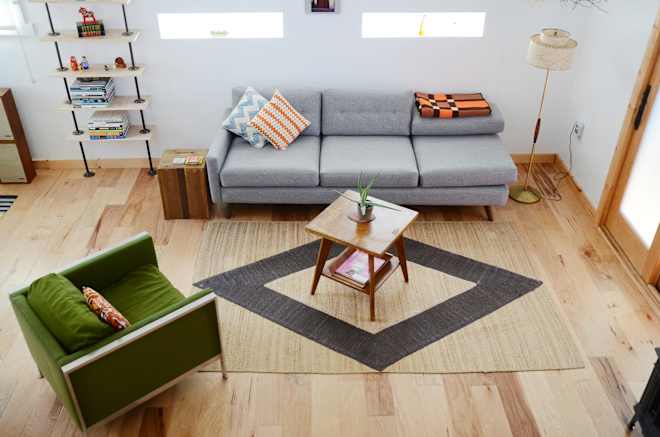Sleep products for kids: Do they really help?
Sleep products for kids are a tempting solution to a challenge that plagues many households. We spoke to pediatric sleep experts about when (and when not) to use them, and explored two popular options.


Parenting a sleep-resistant child is a thankless task that can drive even the most mature, loving adults to desperation.
There are only so many times a night that you can be woken from a peaceful slumber to rub a child's back, adjust their blankets, or walk them back to bed.
Or maybe your struggles take place before anyone has actually gone to sleep, as your anxious child springs from their bed like a Jack In the Box and requires a sip of water, a snack, another song — basically anything that will forestall the inevitable. Let's not even speak of the exhausting tantrums that happen when bedtime becomes a power struggle.
There's no shortage of internet advice about fool-proof sleep solutions, but parents might be particularly interested in gadgets that leverage tech in service of improving their child's sleep. After all, adults can monitor their own sleep with wearables and use smart mattresses to optimize their rest.
The options for kids, however, are much more tailored to creating a calm bedtime routine or ritual. New entrants to the category include the audio player Tonies' expanded Sleepy Friends series, and Moonbird's moonbuddy, a handheld "breathing companion" designed specifically for kids.
But will gadgets geared toward kids — or their parents — lead to a transformational change in how easily and happily children go to sleep, and stay there?
To find out, Mashable interviewed pediatric sleep experts about how to tackle typical bedtime challenges, and personally tested the new Tonies and Moonbird products. What we learned may lead you to reconsider using tech gadgets for a better night's sleep.
Why children's sleep goes haywire
First, let's establish one rule: This is a judgement-free zone. We're not here to cast blame on parents who haven't been able to implement or keep a consistent bedtime routine.
"Life is hard as it is, and life for two working parents can be very difficult," says Dr. David Gozal, a pediatric sleep expert and dean of medicine and vice president for health affairs at Marshall University.
Yet Gozal also knows that everyone in a household, and especially children, need a dependable bedtime schedule. This means having time to wind down as well as going to sleep and waking at approximately the same time every day. So without this routine in place, a gadget that plays soothing white noise may have little to no effect on a toddler who'd rather stay up to watch a movie or play with a sibling, if that's what happens most nights.
For parents of children who don't want them to leave the room at bedtime, Gozal says it's possible to gradually transition away from the practice of remaining present until they've fallen asleep. Parents may start at their bedside and progressively increase their distance until they're standing at the door. Eventually, the child should be able to drift off and self-soothe if they wake overnight.
"Life is hard as it is, and life for two working parents can be very difficult."
Gozal also says that many parents unintentionally send their children the wrong message when they treat sleep as a burden rather than a blessing. In his experience, children pick up on this messaging very quickly, particularly if they see their parents skipping sleep or lamenting about losing time to rest.
If this sounds familiar, it's time to rethink your relationship with sleep so that you can present it to your child as something essential for physical growth, emotional well-being, and overall happiness. There's not a screen-free audio player in the world capable of doing that for you.
These dynamics can help explain why some children fight bedtime. But parents should also be aware of medical conditions like obstructive sleep apnea, asthma, and allergies that can rouse them from sleep, says Dr. Sanaz Vaziri, a pediatric pulmonologist and sleep medicine specialist at UCSF Benioff Children's Hospital in San Francisco.
A child who's been woken up by an obstructed airway, for example, may have no clue why they're suddenly awake, but they still might ask for handholding to fall back asleep. A parent might become frustrated by such regular wake-ups. What's less obvious, though, is that untreated or poorly controlled asthma and allergies can lead to disrupted sleep thanks to airway inflammation and congestion.
Vaziri says parents should follow up with a physician if they notice that their child is consistently groggy or tired after what should have been a full night's sleep. Other red flags that may indicate an underlying medical problem include snoring, pauses in breathing, and restless sleeping. Technology, of course, will not solve sleep struggles if they stem from a medical condition, she says.
In general, Vaziri does not recommend a specific tech device to parents to help with sleeping challenges at home, partly because what works for one child may not work for another. When parents are evaluating a product, she suggests clarifying its purpose and ensuring that it's developmentally appropriate.
Most importantly, it should help a child relax and not pose any risk to them. Still, she discourages parents from relying on it solely.
"It shouldn't ever be a standalone solution," she says.
What to know about Tonies Sleepy Friends and Moonbird's moonbuddy
Tonies, the popular screen-free audio player, recently expanded its Sleepy Friends series with an ocean-themed collection. The player works by placing an adorably crafted figurine on top of the speaker, which prompts the content to play. (The player itself, known as a Toniebox, retails for $99.99. Each Sleepy Friends Ocean Collection Tonie is $19.99.)
The latest collection includes a pastel-hued miniature octopus and whale. The former cues up more than 40 minutes of bedtime stories while the latter offers more than two hours of instrumental lullabies.
Whether or not the Tonies Sleepy Friend content calms your child will be impossible to know until you've listened to it firsthand. You might have a sense based on past experiences with audiobooks and recorded songs at bedtime. If your child has scoffed at these in the past, it's unlikely this particular collection will change their mind.

Children who struggle to stay in bed instead of play with toys might also be tempted to handle their Tonies figurines, especially if more than one is available to them in their room.
For parents, the real downside to the Tonies audio player is that it cannot be controlled remotely from an adult's phone. The Tonies competitor Yoto has this functionality, which means that parents can remotely turn on or off audio content and white noise.
But if you want to stop a Toniebox before it's completed all the tracks or put a new Tonies figurine on it, you must sneak into your child's room to physically make the change. Depending on your child, that may require Mission Impossible-level stealthiness.
A similar strategy may be required of parents who decide to use Moonbird's moonbuddy for sleep, too.
Billed as "your child's new best friend in relaxation," the moonbuddy is a handheld, screenfree silicone device that gently inflates and deflates to help encourage calm breathing. With the help of removable sleeves, it can be styled to look like a bird or bear. It costs $89.

A button on the back of the device can change the breathing rhythm to one of four settings, ranging from 6 to 10.5 breaths per minute. Each exercise is 4 minutes long, after which the moonbuddy shuts off automatically.
Testing in this reporter's household yielded positive reviews from a younger child who used the device prior to falling asleep, but it also prompted that child to call out for parental help to find their moonbuddy in the middle of the night.
Dear reader, it was lost somewhere in the sheets and wasn't discovered until the morning. Anticipating such a scenario, this reporter's husband tried to find it after the child had fallen asleep in order to place it in a prominent location to avoid middle-of-the-night discontent. Alas, upon stealthily entering the child's bedroom after they'd nodded off, this reporter's husband didn't see it, and also didn't dare to dig around for it, for fear of waking up the child.
The child wanted it the next night but their request was not granted, for hopefully obvious reasons, and they forgot all about it within a day.
This is but one anecdotal experience, but Dr. Gozal does question whether children need tech gadgets to help them sleep, if they have the other necessary conditions for sleep. Simpler interventions may make bedtime much easier than any device, he adds.
A warm bath, for example, raises body temperature, which can be conducive to sleepiness.
Still, parents may choose to add a calming tech product to their bedtime routine and find success. If they do, Gozal says just to avoid outsourcing bedtime stories or songs, or other nurturing aspects of the child-parent relationship, to any product.
"That bond cannot be replaced or supplanted by an electronic device," he says.



















_Alexey_Kotelnikov_Alamy.jpg?width=1280&auto=webp&quality=80&disable=upscale#)



















































